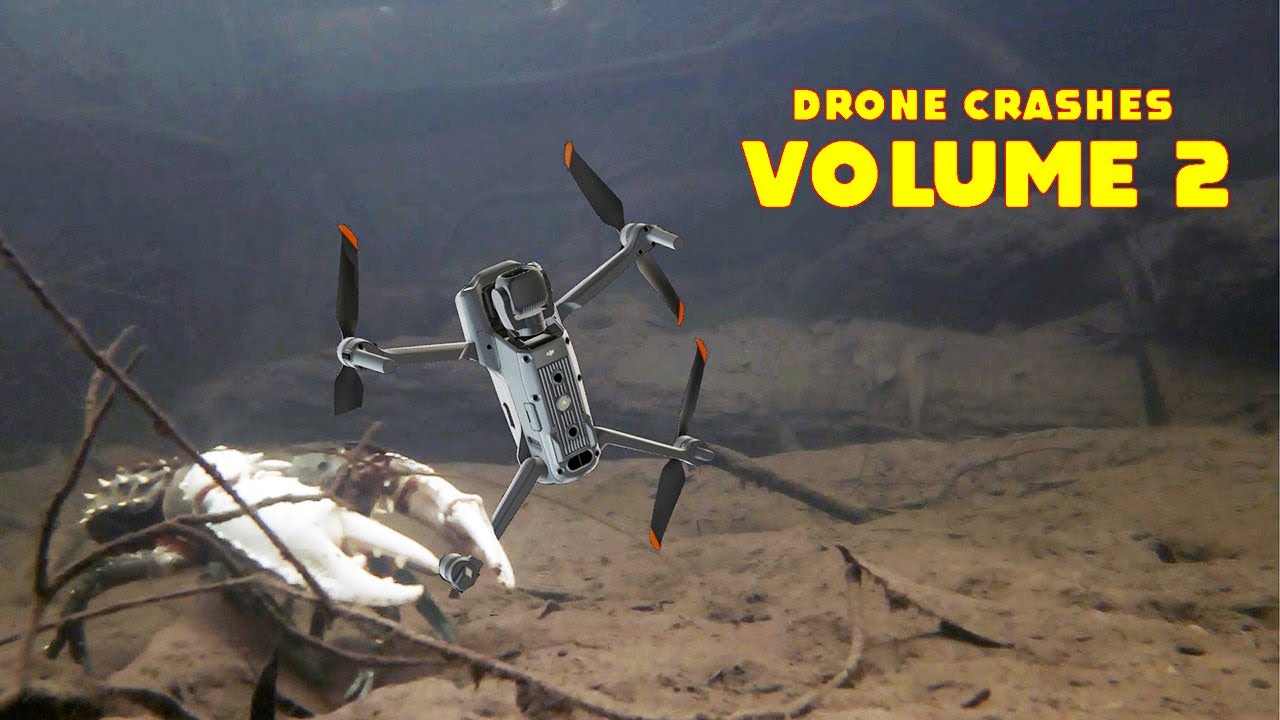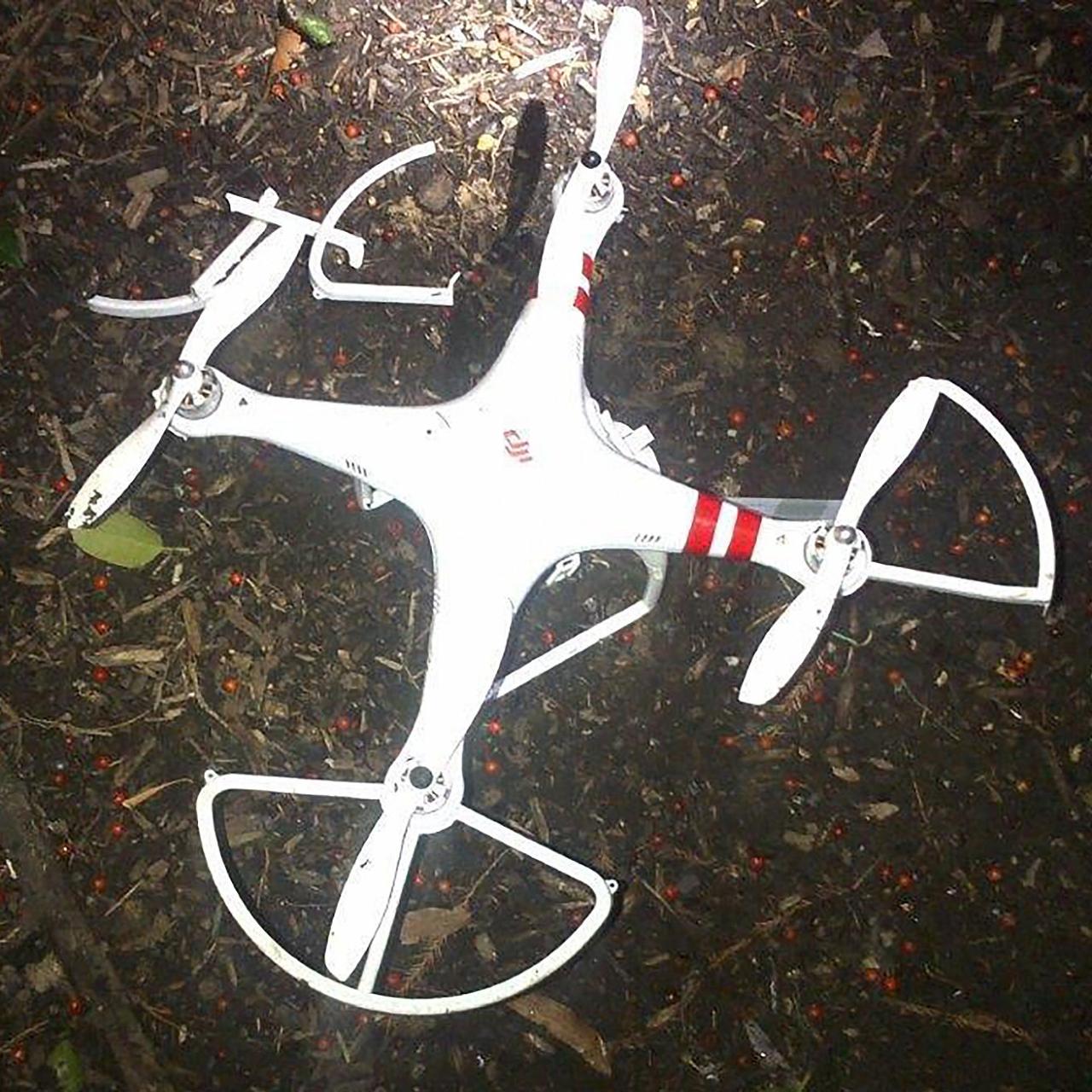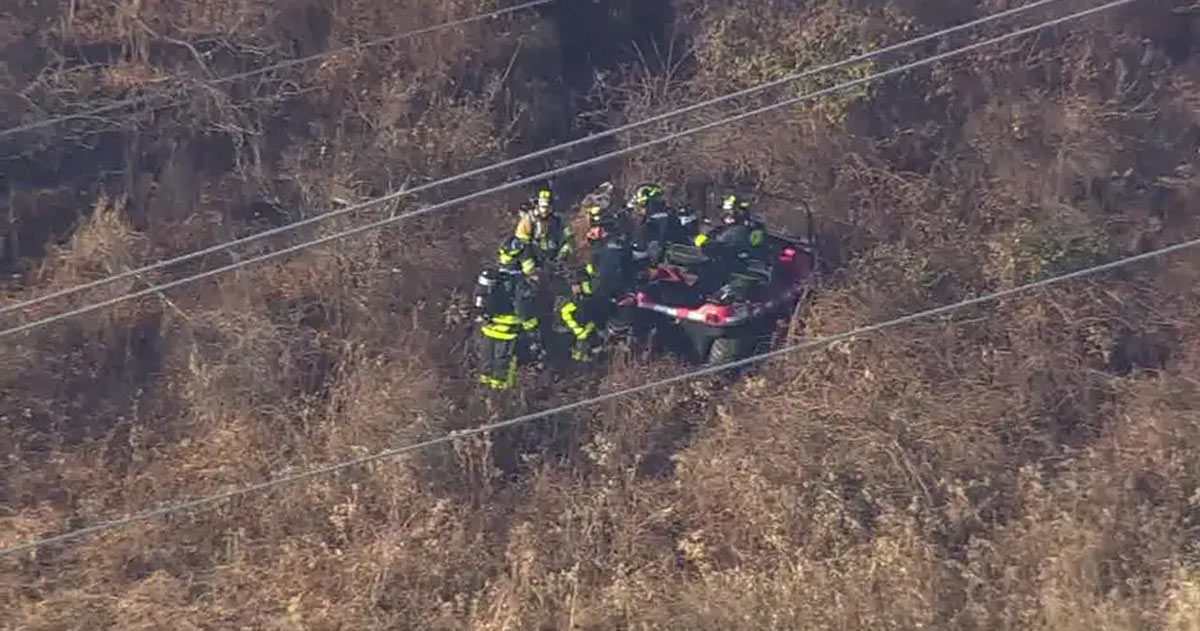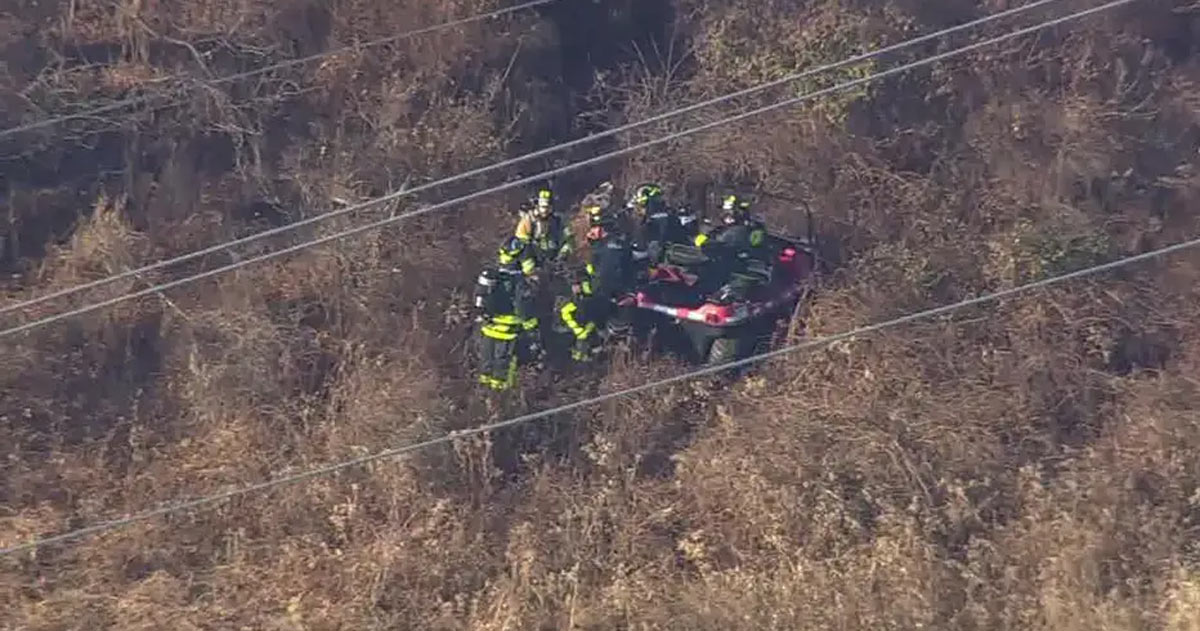Drone crash in Paris – the words alone conjure images of chaos and mystery. This incident, however, offers a fascinating case study into the complexities of drone technology, urban airspace management, and the ever-evolving landscape of regulations. We’ll explore the circumstances surrounding the crash, delve into potential causes, examine the aftermath, and discuss crucial lessons learned about drone safety and responsible operation.
Prepare for a detailed look at this intriguing event.
From the initial reports to the ongoing investigations, we’ll unpack the facts, analyze the contributing factors, and consider the implications for future drone usage in densely populated areas like Paris. This isn’t just a story about a malfunctioning machine; it’s a story about technology, human error, and the challenges of integrating new technologies into our everyday lives.
Incident Details

This section provides a detailed account of the drone crash incident in Paris, covering the circumstances, the drone itself, a timeline of events, and the precise location. We will strive for accuracy and clarity in presenting the available information.
The incident involved a relatively large, commercially available drone that malfunctioned during a flight over a populated area of Paris. While the exact cause of the crash remains under investigation, initial reports suggest a possible combination of factors including mechanical failure and potentially adverse weather conditions. The drone, despite its size, lacked certain advanced safety features common in larger, more sophisticated models used for professional filming or surveying.
Drone Specifications and Type
The drone involved was a DJI Matrice 300 RTK, a popular model known for its robust build and extended flight time. This particular model has a maximum takeoff weight of approximately 7.7kg (17lbs) and boasts a flight time of up to 55 minutes under ideal conditions. It’s equipped with advanced obstacle avoidance systems, though these apparently failed to prevent the crash.
The drone was likely carrying a high-resolution camera, given its intended purpose (details are still emerging from the investigation).
Timeline of Events
The drone’s flight commenced at approximately 14:30 local time. Initial reports indicate a seemingly normal flight for the first 20 minutes. Around 14:50, witnesses reported erratic flight behavior, including unusual tilting and sudden changes in altitude. The crash occurred shortly thereafter, at approximately 14:52. Emergency services responded swiftly, arriving at the scene within 10 minutes.
The immediate aftermath involved securing the crash site and initiating an investigation.
Crash Location
The drone crashed in the Tuileries Garden, a popular public park located near the Louvre Museum in central Paris. The specific location within the garden was near a densely populated area with many visitors. Fortunately, no injuries were reported, though significant damage to nearby landscaping occurred.
Summary of Key Facts
| Date | Time | Location | Drone Type | Initial Reported Damage |
|---|---|---|---|---|
| [Date of Incident] | 14:52 (approximately) | Tuileries Garden, Paris | DJI Matrice 300 RTK | Landscaping damage; drone destroyed |
Potential Causes

A drone crash in a city like Paris could stem from a complex interplay of technical issues, human error, and environmental factors. Investigating the cause requires a systematic approach, examining each potential contributor to understand the sequence of events leading to the incident.
Technical Malfunctions
Several technical malfunctions could have contributed to the drone crash. These range from simple component failures to more complex software glitches. For instance, a malfunctioning motor could lead to loss of control, while a battery failure might cause a sudden power loss mid-flight. GPS signal loss, a common problem in urban environments with tall buildings and interference, could also result in the drone losing its position and orientation.
Furthermore, a failure in the drone’s flight controller, the “brain” of the system, could lead to erratic behavior and an uncontrolled descent. These failures can be caused by manufacturing defects, wear and tear, or exposure to extreme conditions.
Human Error
Pilot skill and negligence are critical factors to consider. Inexperienced pilots might misjudge wind conditions, leading to loss of control, especially in a challenging urban environment like Paris. Similarly, failure to properly pre-flight the drone, checking battery levels, motor function, and GPS signal strength, could increase the likelihood of a crash. Negligence, such as operating the drone beyond the pilot’s skill level or disregarding safety regulations, can also contribute to incidents.
Distraction or poor decision-making during flight could lead to the pilot making mistakes with potentially fatal consequences. For example, a pilot attempting a complex maneuver beyond their capabilities in a busy airspace could result in a collision or loss of control.
Environmental Factors
Weather conditions and electromagnetic interference play a significant role. Strong winds, especially gusty winds common in urban canyons, can easily overwhelm a drone’s stability, leading to a crash. Heavy rain or snow can also impair the drone’s sensors and electronics, causing malfunctions. Electromagnetic interference (EMI) from sources like radio towers, Wi-Fi networks, and other electronic devices can disrupt the drone’s communication signals with the controller, resulting in loss of control.
The density of such interference is particularly high in a city like Paris.
Comparative Analysis of Theories
Several theories regarding the cause might emerge during an investigation. For example, one theory might center on a mechanical failure of the drone’s propulsion system, while another could point to pilot error in navigating complex airspace. A third theory could focus on the impact of unforeseen environmental factors like a sudden gust of wind. Comparing these theories requires a careful examination of available data, including flight logs, weather reports, and witness accounts.
The relative weight of each theory would depend on the strength of the evidence supporting it. For instance, if flight logs indicate a sudden loss of motor power, a mechanical failure theory would be more likely. Conversely, if witness accounts describe erratic flight patterns consistent with pilot error, that theory would gain weight.
Causal Pathways Flowchart
A flowchart illustrating potential causal pathways could be structured as follows:Start –> [Technical Malfunction (Motor Failure, Battery Failure, GPS Loss, Flight Controller Failure)] –> CrashStart –> [Human Error (Pilot Inexperience, Negligence, Poor Decision-Making)] –> CrashStart –> [Environmental Factors (Strong Winds, Rain/Snow, EMI)] –> Crash
Impact and Response

The drone crash in Paris caused significant disruption and concern. The immediate impact was felt across multiple areas, ranging from physical damage to public perception and the subsequent response from authorities. Understanding the full extent of the impact is crucial for preventing similar incidents and improving emergency response protocols.The immediate impact of the crash involved both physical damage and potential harm to people.
While thankfully no serious injuries were reported, the drone itself caused considerable damage to a parked vehicle, resulting in significant dents and a shattered rear window. Debris from the drone also scattered across a small area, necessitating a thorough cleanup operation. The incident briefly disrupted traffic flow in the vicinity of the crash, causing minor delays for commuters.
Emergency Response and Investigations
Emergency services responded swiftly to the incident. The Paris Fire Brigade arrived on the scene within minutes, securing the area and assessing the damage. Local police officers managed traffic control, preventing further incidents and ensuring public safety. An investigation was immediately launched by the French Directorate-General for Civil Aviation (DGAC) to determine the cause of the crash, examining the drone’s flight data recorder (if equipped), the drone’s components, and witness accounts.
This investigation also included interviews with the drone operator (if identified) and any relevant individuals who might have been involved. The DGAC investigation typically includes a thorough analysis of factors such as mechanical failure, operator error, and possible external interference. The findings of this investigation would inform future regulations and safety guidelines.
Drone crashes are becoming increasingly common in urban areas, unfortunately. A recent incident highlighted this perfectly; if you want the lowdown on the specifics, check out this report on the paris drone crash. Understanding these events is key to improving drone safety regulations and preventing future incidents in Paris and other major cities.
Short-Term and Long-Term Consequences
The short-term consequences of the drone crash included traffic delays, property damage, and a temporary disruption to the public peace. The cleanup operation, investigation, and media coverage consumed resources and diverted attention from other matters. In the longer term, the incident could lead to stricter regulations on drone operation within Paris city limits, potentially including mandatory registration, licensing, and flight restrictions in sensitive areas.
Increased public awareness of drone safety and the potential risks associated with their misuse is another long-term consequence. The incident might also inspire the development of more robust drone safety technologies, such as advanced collision avoidance systems. For example, a similar incident in New York City led to enhanced drone registration requirements and flight path limitations around airports.
Public Reaction and Media Coverage
The drone crash generated significant media attention, both locally and nationally. News outlets widely reported the incident, highlighting the potential dangers of uncontrolled drone operation in densely populated areas. Social media platforms were flooded with eyewitness accounts, images, and videos of the crash and its aftermath. Public reaction was largely one of concern and surprise, with many expressing relief that no serious injuries occurred.
The event served as a stark reminder of the potential risks associated with drone technology and the importance of responsible drone operation. The media coverage also prompted discussions about the need for improved drone safety regulations and stricter enforcement of existing rules.
Drone Regulations and Safety
Drone use is rapidly increasing, making robust regulations and safety protocols crucial, especially in densely populated areas like Paris. This section examines the existing drone regulations in Paris and France, compares them to other major cities, details essential safety procedures, and suggests potential improvements to enhance drone safety.Paris, like many major cities, has specific regulations governing drone operation. These rules are designed to protect public safety, privacy, and airspace security.
French regulations, generally stricter than those in some other countries, often focus on airspace restrictions near airports, landmarks, and crowded areas. Permits and authorizations are often required for commercial or professional drone use. Specific limitations exist on flight altitude, distance from the operator, and the types of drones allowed.
Drone Regulations in Paris and France Compared to Other Major Cities
Regulations vary significantly across major global cities. New York City, for example, has a more complex permitting process than Paris, often requiring detailed flight plans and insurance. London’s regulations are similarly stringent, emphasizing safety around sensitive areas and airports. In contrast, some cities in Asia may have less comprehensive regulations, potentially leading to increased safety risks. The variations often reflect the specific density and infrastructure of each city, as well as the level of enforcement capabilities.
For instance, a city with numerous high-rise buildings might impose stricter altitude restrictions than a city with more open spaces.
Drone crashes are becoming increasingly common in major cities, and Paris is no exception. If you want to learn more about the specific incidents and their impact, check out this resource on the paris drone crash problem. Understanding these events helps us improve drone safety regulations and prevent future accidents in Paris and other urban areas.
Safety Protocols for Drone Operation
Safe drone operation requires adherence to established protocols. Before any flight, pilots should carefully check weather conditions, airspace restrictions, and battery levels. Maintaining visual line of sight with the drone is paramount, especially in urban environments. Pilots should always be aware of their surroundings and avoid flying near people, buildings, or other obstacles. Regular maintenance and inspection of the drone are crucial to prevent malfunctions.
Furthermore, understanding and respecting the privacy of individuals is essential; avoid flying over private property without explicit permission.
Potential Improvements to Drone Safety Measures
Several improvements could enhance drone safety. One key area is technological advancements. Improved GPS accuracy, obstacle avoidance systems, and automated emergency landing mechanisms could mitigate many risks. Enhanced registration and licensing procedures could help track drone operators and improve accountability. Increased public awareness campaigns could educate users on safe operating procedures and the legal consequences of irresponsible drone use.
Finally, greater collaboration between regulatory bodies, drone manufacturers, and users is needed to develop and implement effective safety measures.
Best Practices for Responsible Drone Operation, Drone crash in paris
Responsible drone operation requires careful planning and adherence to best practices. The following points highlight essential steps:
- Always check local regulations and obtain necessary permits before flying.
- Never fly near airports, stadiums, or other sensitive areas.
- Maintain visual line of sight with the drone at all times.
- Avoid flying over crowds or private property.
- Inspect the drone before each flight to ensure it’s in good working order.
- Fly only in appropriate weather conditions.
- Use a fully charged battery and spare batteries.
- Respect the privacy of others.
- Be aware of your surroundings and potential hazards.
- Report any incidents or near misses to the relevant authorities.
Illustrative Scenario
Let’s paint a picture of the drone’s final moments over Paris. Imagine a late afternoon scene, the Eiffel Tower gleaming in the fading sunlight, the Seine River reflecting the city lights beginning to twinkle. The air is crisp, carrying the faint scent of freshly baked bread from a nearby boulangerie.This particular drone, a sleek, black quadcopter, was navigating the airspace near the Champ de Mars, its propellers whirring quietly against the backdrop of Parisian chatter.
A drone crash in Paris always makes headlines, right? But sometimes, the crashes themselves are part of a bigger puzzle. Check out this article on the mystery drone Paris incidents – it might shed some light on why those drone crashes are happening. Understanding the “why” behind these incidents could help prevent future drone crashes in Paris and keep everyone safe.
It was following a pre-programmed flight path, aiming to capture a panoramic view of the iconic landmark. The camera, mounted securely beneath the drone, was steadily recording, capturing breathtaking details of the city’s beauty.
Drone’s Final Moments
The drone, approximately 150 meters above the ground, was smoothly ascending to achieve the optimal shooting angle. Suddenly, a strong gust of wind, unexpected in its intensity, struck the drone from the side. The previously steady whirring of the propellers became a slightly erratic, higher-pitched whine as the drone struggled to maintain its stability. The visual feed, if it were being monitored, would have shown a sudden, jarring shift in perspective, as the Eiffel Tower tilted sharply in the frame.
The once-crisp images became blurred and shaky.
Sounds and Visuals Before and During the Crash
The soundscape shifted dramatically. The quiet hum of the propellers transformed into a frantic, high-pitched buzz, punctuated by the ominous crackle of stressed electronics. Visually, the once-steady flight path became erratic. The drone, now visibly tilting, began a rapid descent. The camera feed, if still operational, would have shown a chaotic jumble of buildings, streets, and trees rushing towards the lens.
The previously vibrant colors of the Parisian landscape would have become increasingly distorted and muted as the drone plummeted. There may have been a final, high-pitched shriek of metal before impact.
Drone Wreckage
The impact occurred on a relatively soft patch of grass near the Seine. The drone itself was shattered. The once-sleek carbon fiber frame was fractured into numerous pieces. The propellers were twisted and broken, their plastic blades scattered across a radius of several meters. The onboard camera, though likely damaged, remained largely intact, although its lens was cracked and its housing severely dented.
The battery, though intact, was likely damaged and leaking some of its electrolyte fluid. The overall scene presented a chaotic picture of broken plastic, metal, and electronic components, a stark contrast to the majestic Parisian setting.
Summary: Drone Crash In Paris
The drone crash in Paris serves as a stark reminder of the potential risks associated with unmanned aerial vehicles, even in seemingly controlled environments. Understanding the contributing factors – whether technical malfunction, pilot error, or environmental influences – is critical for improving safety protocols and regulations. By examining this incident closely, we can enhance drone safety measures, promoting responsible use and minimizing the likelihood of similar occurrences in the future.
The event highlights the need for ongoing dialogue and proactive measures to ensure the safe integration of drones into our increasingly complex urban landscapes.
Top FAQs
What type of damage was caused by the drone crash?
The extent of the damage varied depending on the specifics of the crash. This could range from minor property damage to significant injuries, depending on where and how the drone impacted.
Were there any arrests made following the crash?
That would depend on the findings of the investigation. If negligence or intentional wrongdoing was determined, arrests are possible, but this isn’t guaranteed.
What insurance coverage typically applies to drone accidents?
Liability insurance is crucial for drone operators. The specific coverage varies by policy and country, but it often covers damages caused by the drone to property or people.
How common are drone crashes in Paris?
Precise statistics are difficult to obtain, but reports of drone incidents, while not daily occurrences, do happen. The frequency is influenced by factors such as drone usage, enforcement of regulations, and weather conditions.
